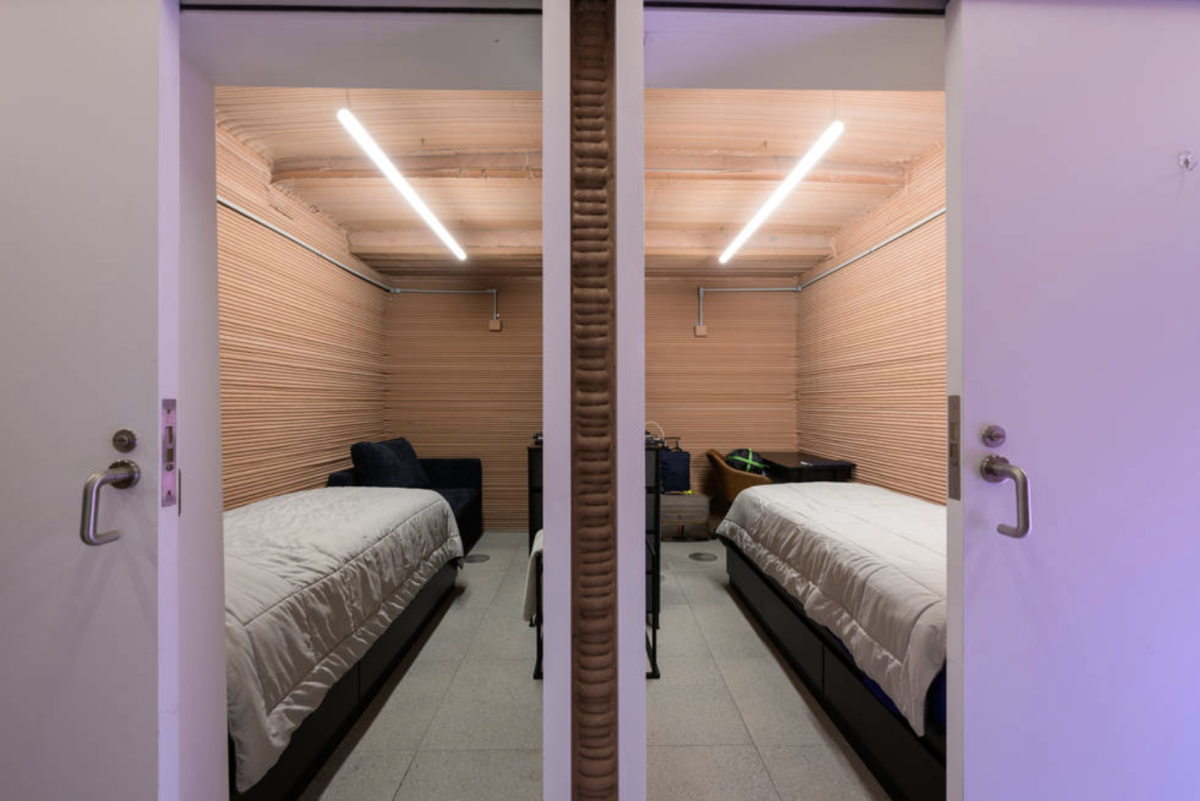Four NASA Subjects Are Now in Isolation for Mars Simulation
Posted on Categories Discover Magazine

Human beings have evolved to thrive in the conditions of our planet. Often though, people thrust themselves into extreme environments: scientists studying Antarctic weather patterns, divers recovering wreckage from the deep sea, or explorers mapping sprawling cave systems.
What we know is that people are resilient, and the human psyche can adapt to deal with a range of scenarios. But what about being marooned on another planet, with only a thin barrier separating you and your peers from the vacuum of space? NASA is trying to gauge how humans might fare.
On June 25, four volunteers entered the 1,700 square-foot simulated Mars habitat at NASA’s Johnson Space Center in Houston. The crew will spend 378 days in the Martian analog environment, simulating the challenges of a human mission to Mars.
Read More: The Human Body Might Survive a Mission to Mars Better Than Our Minds
Mars Isolation Training for Astronauts
Although future missions to Mars will involve extensive technological and logistical planning, the Crew Health and Performance Exploration Analog (CHAPEA) mission will primarily investigate the psychological stressors and human factors that affect astronauts on long-haul exploration missions.
The inaugural CHAPEA mission will be the first of three Mars analogue studies that will provide crucial insight into how people might deal with adversity, stress, isolation and confinement for long periods of time — while traveling the farthest anyone has ever been from Earth.
The aim of CHAPEA is to create as realistic an analog as possible for what future explorers might face on the red planet.
“We created a Mars-realistic timeline that includes activities expected for Mars surface missions such as maintenance, growing small crops indoors, exercise, robotics and extravehicular activities,” says Suzanne Bell, lead for NASA’s Behavioral Health Performance Laboratory at the Johnson Space Center, and one of the co-investigators for CHAPEA.
Read More: What Happens When Humans Are Extremely Isolated?
Mars and Mission Control Simulation
The simulation will even include communication delays similar to what astronauts on Mars would experience when interacting with Mission Control.
“So they will perform these tasks with unprecedented levels of autonomy than is currently required in the International Space Station,” Bell says. “The crew will need to complete those tasks but also problem solve and adapt when things don’t go exactly as planned.”
This means that throughout 378 days, the volunteers will face a number of obstacles, such as having to conserve resources, dealing with unexpected equipment failure, simulating spacewalks with the help of virtual reality and maintaining a healthy balance of work, personal time and sleep.
Selecting the CHAPEA Participants
The four participants include a biomedical research scientist, a structural engineer, an emergency medical physician and a microbiologist. The specialties among them cover a broad range of skills capable of dealing with various problems that might arise.
Participants had to be psychologically evaluated before being admitted into the mission.
“For CHAPEA, we carefully screened participants so that they are likely to survive and thrive in Mars-realistic conditions. For example, we assessed their ability to adapt, regulate their emotions and work as a team,” Bell says.
While the crew will have plenty to do during their time in the Mars analog, they will have to contend with being confined to a small space for a long period of time with only a small group of people.
That includes being largely isolated from the outside world, though they will be able to have delayed communication with friends and family. The crew was also granted their own private quarters, allowing them to get some degree of privacy.
“We are collecting data on the habitability of the analog, and also other potential means for mitigating long-term isolation and confinement,” Bell adds.
Read More: Can Humans Live in Space Without Going Crazy?
How Long Will Mars Mission Take?
It is estimated that future missions to Mars will last 18 months, and over that time, the astronauts’ new environment will become their new home.
Bell says there are a few ways astronauts can make their new quarters feel like more than just a place to work: “Growing crops and plants and bringing favorite games, pictures and mementos of home can help make a habitat feel a little more like home.”
Virtual Reality Support for Preparation to Mars
Virtual Reality (VR) and Augmented Reality (AR) are set to help the participants simulate what it will be like space walking on the surface of the red planet.
Investigators are also looking into the possibility of using these technologies to help maintain the well-being of crew members of extended missions.
“We are actively researching that area. For example, can VR/AR help future exploration astronauts enhance their connection to family and friends back on Earth, and can a virtual walk in the woods or virtual vacations during downtime help boost mood and well-being in long-term isolation?” asks Bell.
Is There Any Risk of Failure?
Equipment failure is certainly one of the major risks when traveling to another world, but arguably the most unpredictable element of our future exploration of the Solar System is us.
How will people cope with spending extended time in close quarters that are the farthest anyone has ever been from home?
The analog missions are set to provide crucial insights into whether human beings might one day become a truly space-faring species.
Gratitude for the Astronauts
As such, principal investigator for the CHAPEA mission Grace Douglas included a word of gratitude for the subjects when they entered their habitat last month:
“Thank you all for your dedication to exploration, our best wishes go with you as you begin this adventure of discovery.”
Read More: The Long-Awaited Mission That Could Transform Our Understanding Of Mars